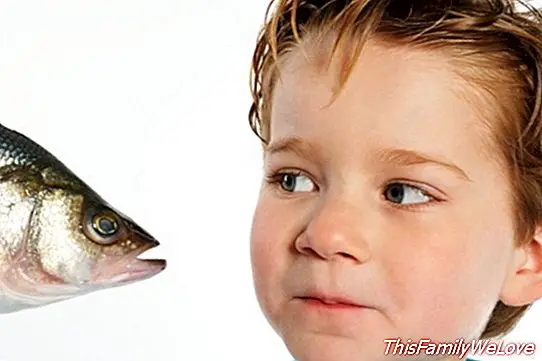Allergy to fish in babies and children: symptoms and diagnosis

The food allergies They are frequent in children. In particular, the fish allergy usually appears over the first or second year of life, which makes parents come up Many doubts about it. What are your symptoms? How to identify it?
The allergy to fish it is produced, in most of the times, "by an immunological alteration for which the allergic patient synthesizes an antibody against the proteins of the fish", explains the Spanish Association of Pediatrics in Primary Attention (Aeped), which indicates that this alteration provoke an immediate reaction when swallowed or you have contact with him, something that can not be prevented.
Experts indicate that fish allergy usually occurs when eating it for the first time, something that usually occurs during the first or second year of life. They also explain that it usually lasts longer than the milk or egg allergy, and that it can even last for decades.
Differences between fish
The main allergen in fish is a protein called parvalbumin which is very similar in all fish, which makes patients allergic to fish "are more than one." "Fish with higher parvalbumin content produce more allergies than those with less", pediatricians detail.
In our country, the fish that produce more allergies are the rooster or rapante, followed by hake, sardines and cod. Conversely, The best tolerated are the emperor, the dogfish and the tuna. In fact, those allergic to tuna can take it canned, "which indicates that the preparation for canning can reduce its allergenicity," they explain.
On the other hand, it is noteworthy that it is common for allergic reactions with exposure to cooking steam from fish. Also, pediatricians say that although there is a belief that people who are allergic to fish are also allergic to other seafood, a patient allergic to fish does not have to be allergic to shellfish.
The symptoms of fish allergy
In general, the symptoms of those who are allergic to fish are similar to those that are allergic to other foods. "They usually appear immediately or during the first hour after having swallowed it," the paediatricians say, explaining that the most frequent is the Appearance of itching of the mouth or pharynx with or without redness or urticaria around the mouth by contact with the fish.
Other prominent symptoms are the appearance of wheals throughout the face and body and "even swelling of lips, eyelids and ears", symptoms that add the appearance of vomiting or diarrhea during the first hour after eating fish.
The Respiratory involvement, such as rhinitis or asthma, are less frequent, but "are alarm symptoms", comment the pediatricians, while detailing that asthmatic patients are more at risk of having severe reactions. At this point, they indicate that anaphylaxis is the most serious manifestation that can occur: the appearance of respiratory distress, shortness of breath, repetitive or dry cough, swelling of the tongue, closed throat, hoarseness, faintness, pallor, blue lips or skin, Weak pulse or exhaustion are symptoms of severity and is an absolute indication that early administration of adrenaline is necessary.
What do I do if my child has a fish allergy?
Pediatricians are clear: if we observe that our child has any of the symptoms described, it is necessary to suspend the diet of any fish and consult the pediatrician, who will give the necessary recommendations and send the child to the allergist for diagnosis.
Also, at the time when we observe the allergic reaction to fish it is necessary to wash the contact area, administer antihistamines and, if the reaction is very serious, give adrenaline.
The diagnosis of fish allergy
Allergy to fish is diagnosed by the detection of immunoglobulin E specific to fish, with skin tests and, sometimes, with a blood test. "In doubtful cases it is necessary to administer the food in progressively increasing quantities and in a very controlled manner (controlled exposure or provocation test) in the hospital, to confirm or rule out the allergy to fish," the pediatricians detail.
Also, experts explain that most children allergic to hake or rooster tolerate other fish such as tuna, emperor or tope shark which are much less allergenic, as has been mentioned before."With the aim that the patient has a diet as complete as possible, it is usually conducted a tolerance study with these fish, through controlled exposure test," they comment.
Angela R. Bonachera




